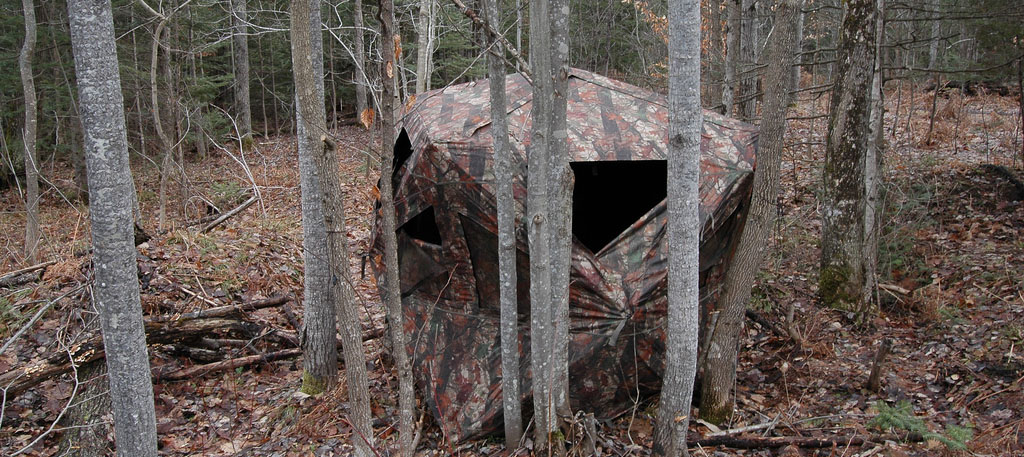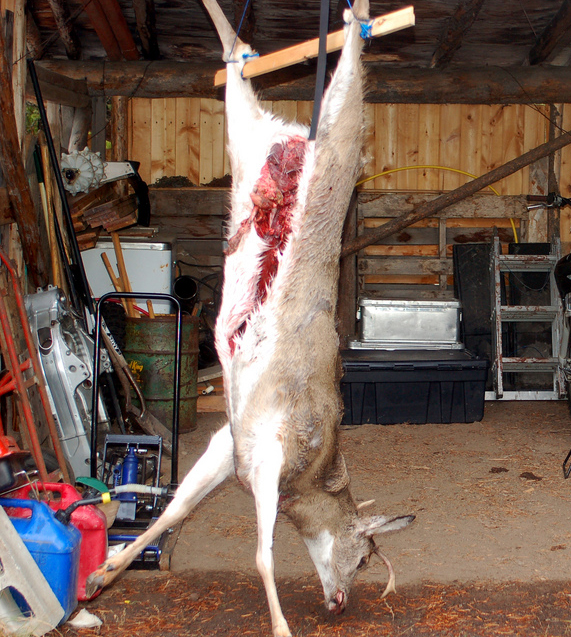 Finally purchasing a new scope can be exciting. Once you have made your purchase, the next step is to attach the scope to your rifle. Unless you want to use duct tape, you have to purchase rings and mounts that match your rifle and the scope. This article will explain the scope mounting process and remove some of the confusion that comes with the ‘techno-babble’ terms that are used. After reading this article, I hope that you will be able to do this exacting task of mounting a rifle scope properly and accurately.
Finally purchasing a new scope can be exciting. Once you have made your purchase, the next step is to attach the scope to your rifle. Unless you want to use duct tape, you have to purchase rings and mounts that match your rifle and the scope. This article will explain the scope mounting process and remove some of the confusion that comes with the ‘techno-babble’ terms that are used. After reading this article, I hope that you will be able to do this exacting task of mounting a rifle scope properly and accurately.
Like purchasing a quality scope, being cheap with your mounting system will cause you to have problems in the long run. Doing proper research, find out what kind of mounts are available for your rifle and knowing how to properly mount a scope to your rifle can be a bit time consuming but ultimately rewarding. Remember that your choice of mounts is what connects your rifle to your scope. If you have a quality rifle and a quality scope but poor mounts that allow the scope to slide, loosen up over time and recoil or don’t hold true over usage will cause you endless frustration and can make you miss the shot of a lifetime.
There is a bewildering amount of mounting options. It is time to do some research, decide on whether you plan on removing the scope once its mounted or not, examine your rifle to see what types of mounts will work with its receiver and if all else fails, contact a qualified gunsmith or knowledgeable friend.
 Trying to decide if Leopold style mounts, weaver style rings or bases, quick detach rings, tip off rings, dovetail rings or 1913 Picatinny rings will work or not can drive you crazy. Any reputable internet business or brick and mortar gun store should be able to help you make a proper decision also. If they don’t, it’s time to find a new business to deal with, no matter how good the deals.
Trying to decide if Leopold style mounts, weaver style rings or bases, quick detach rings, tip off rings, dovetail rings or 1913 Picatinny rings will work or not can drive you crazy. Any reputable internet business or brick and mortar gun store should be able to help you make a proper decision also. If they don’t, it’s time to find a new business to deal with, no matter how good the deals.
To actually mount the scope to the rifle is not very difficult. It is however time consuming and meticulous. Once you have your rifle, your scope and your mounting system in your possession, find a quiet place where you can work. I recommend you buy a rifle rest or cleaning vise or cradle. This will hold the rifle steady and allow you to use both hands as you work.
Having the right tools for the job is vital. Be sure to find out what screw heads your mount has and get a good quality tool bit for them. Nothing is more frustrating than a stripped screw or broken tool bit. Having a good quality screw head set makes life a lot easier, especially if you have other hobbies that require such tools. I am going to show my age here but I believe loctite is also needed for mounting. I secure all my screws with loctite every time I mount a scope. For the gents, if you don’t have any loctite, quietly get into your wife’s makeup and find red fingernail polish. Do that at your own risk however.
Mechanical Zero
 This is the term used to describe the exact center of the mechanical range of adjustment for your scope. Even if you have purchased a brand new scope, it is recommended to confirm mechanical zero. All you have to do is to rotate your windage adjustment all the way to the stop, then count the clicks as you rotate the windage knob in the other direction. Count how many clicks or turns, divide that number in half and count that number back toward center. Then do that for the elevation adjustment. This will ensure that you have the scope reticle centered in the scope tube and allow you to make adjustments from a known point.
This is the term used to describe the exact center of the mechanical range of adjustment for your scope. Even if you have purchased a brand new scope, it is recommended to confirm mechanical zero. All you have to do is to rotate your windage adjustment all the way to the stop, then count the clicks as you rotate the windage knob in the other direction. Count how many clicks or turns, divide that number in half and count that number back toward center. Then do that for the elevation adjustment. This will ensure that you have the scope reticle centered in the scope tube and allow you to make adjustments from a known point.
If your scope does not have a positive click adjustment, I recommend you make a small mark with paint or a permanent marker on the scope tube and the scope adjustment knob as a point of reference. You could etch it onto the scope tube and adjustment knob but that’s up to you and your skills with an etching tool.
Some scope mounts require a set amount of torque to the screws. I strongly recommend that you purchase or acquire a torque screw driver if that is the case. Once again, the scope mount is a vital piece of your scope. Do not be lazy and use the old ‘That’s good enough’ attitude. If your scopes mount states to torque to a specific pressure, be sure to do that. If there is no stated specific torque, tighten to snug, however do not over tighten.
Once you have gotten all your toys, your tools and locked yourself in your room, it is time to start mounting your scope. At any time, if you feel overwhelmed, just stop and take the rifle to a qualified gunsmith. Better to pay a bit more than to mess up a valuable scope or rifle.
Following the instructions included in your mount, mount the scope base to the rifle. This will depend on what type of scope mounting system you have chosen. Be sure to understand how your scopes mount works. I always test fit before I tighten anything. It is important to put the rings as far apart as possible. This will distribute the weight of the scope, allow for greater balance and stability. Be sure to check each scope ring for casting burs or raised ridges that will cause pressure on the scope tube.
When you tighten the screws, be sure to use a cross over technique when you tighten them. Do not screw one screw in all the way and then do another one the same way. This is similar to tightening lug nuts on a vehicle tire. Tighten a turn per screw, work your way crossway to the other screws and be sure to do both the front and rear scope rings screws. Once all screws are snug down in the scope rings you can torque to specifications if needed. You will be screwing and unscrewing these screws especially if you lap your scope so be sure to use the right screw bit size and be careful not to cross thread the screws.
Lapping
 Lapping the scope to the scope rings is a way to increase precision and to avoid scope misalignment issues. This operation might seem complex but it is not. A good lapping kit does cost around 60.00 to 90.00 USD or more, but if you have several scoped weapons it might be worth the money.
Lapping the scope to the scope rings is a way to increase precision and to avoid scope misalignment issues. This operation might seem complex but it is not. A good lapping kit does cost around 60.00 to 90.00 USD or more, but if you have several scoped weapons it might be worth the money.
When you lap the scope rings, you basically are ensuring proper alignment of the tube, preventing any flex or distortion, tweaking or bending. Misaligned scope rings can dent the tube, cause adjustment issues by putting abnormal pressure to the scope tube or distort the reticle. It is very difficult to see any misalignment with the naked eye. A lapping tool will provide a visual indication of any misalignment.
There are a point to point lapping alignment rods and a bar version. You use the alignment rods to ensure proper scope alignment. There are basically two pieces to a lapping kit, the alignment rod set and the lapping tool. The alignment rod set is either 2 pieces of metal with a point at one end or a bar. The lapping tool piece is a solid rod with a handle to hold and rotate the rod in the scope mount. Be sure to have the lower rings mounted to the rifle then put the proper sized alignment rods into the cradle of the lower scope ring and mount the upper rings. They make 1 inch and 30mm lapping kits, be sure to buy the right one for your scope.
You mount the alignment rods in the scope mount just like a scope tube. If you are very lucky, there will be no misalignment of the points. Usually there is, so that is why you bought the lapping tool. Remove the alignment rods and mount the lapping tool in the scope rings. Remember, you do not want to be too aggressive as you smooth the inner part of the scope rings. You can’t add material, so remove it slowly.
The lapping compound used should be very mild. Once you have the lapping tool mounted and the scope rings properly tightened, use the lapping tool handle to rotate the lapping tool in the mount. This will remove any burs, smooth the inside of the scope rings and align the two mounts to provide a straight cradle for your scope tube. Unscrew the rings, check for alignment and repeat as needed. This process might sound excessive but you have a lot of variables in the scope mounting process and this will eliminate most of them if done properly.
At this point, you should have the scope mounted, the screws tightened but not finally secured, the mount lapped if needed. The scope mounts should be as far apart as possible; the scope should not interfere with the action and it is time to adjust for eye relief.
Eye relief is the ideal distance your eye has from the ocular lens to provide a full field of view through the scope. If you primarily shoot this weapon from a rest, your eye will be closer to the ocular lens than if you where shooting it off-hand. Your head and neck should be comfortable and you should have a consistent cheek weld to ensure proper field of view. It is important to move the scope to your eye, not the eye to the scope. This will cause a neck strain as you crane your neck toward the scope to see through the lens. Adjust your scope to the most comfortable eye relief for the shooting position you believe that you will primarily use.
Boresighting
A boresight tool can be advantageous to you to align the bore to the crosshair reticle. The main purpose of a boresight tool is to get you on the paper when you zero your rifle. It will not accurately align the bore to the scope. You still have to shoot the rifle and fine tune the scope. There are a lot of gadgets that are boresighting tools. I cannot cover all the variables there, I have used several and the more complex is not always the answer.
The oldest method is the ‘eyeball’ method. Secure the rifle in a cradle, remove the bolt, look down the rifle barrel and center the rifle bore on a bullseye target at 50 yards. Then you adjust the crosshair reticle to the same point on the bullseye. Since you used the bore to sight in the rifle that is why it’s called ‘boresighting’. This method does not work with semi auto rifles, pumps, lever action and most pistols.
The second oldest method is collimators and arbors. You mount a collimator using the correct caliber arbor of the weapon you are sighting in. Then you insert the arbor into the bore at the muzzle, having the collimator at the same level as the scope. The collimator has a grid that is visible as you look through the scope. You adjust the scopes windage and elevation to center the crosshairs on the center of the collimator grid.
A magnetic boresight use a magnet to attach a collimator to the rifle barrel, eliminating the need for any arbors. Since each caliber needs its own arbor this saves money by not having to have several different arbors. Magnetic boresights are handy to reconfirm your rifles boresight after a drop or hard use.
 A laser boresight are inserted into the bore of the rifle and project a laser dot on a target. Then the shooter adjusts the scope to the dot. There are different laser boresights for different calibers. The laser is both mounted inside an arbor type item and inserted into the muzzle or as a dummy cartridge that goes into the chamber. The laser dot has to be projected onto a target at a known distance, usually 50 yards.
A laser boresight are inserted into the bore of the rifle and project a laser dot on a target. Then the shooter adjusts the scope to the dot. There are different laser boresights for different calibers. The laser is both mounted inside an arbor type item and inserted into the muzzle or as a dummy cartridge that goes into the chamber. The laser dot has to be projected onto a target at a known distance, usually 50 yards.
Boresighting will only get you on a paper target if done properly. It will not accurately zero any rifle. The only way to accurately zero a rifle is to shoot it with the specific ammunition you plan on using to hunt with. Be sure to remove the arbor from the bore. If you don’t, you will have an obstructed barrel and destroy the arbor and probably your rifles barrel when you fire that first round. Boresighting will alert you to any mounting or scope adjustment issues immediately, saving you time, ammunition and frustration.
A small crosshair leveling level will be required to ensure that your crosshair reticle is level to the rifle. You can eyeball this process but each person is different and this will ensure level. Just like everything else we are doing to mount this scope, it will eliminate a variable. If your crosshairs are not level, as you adjust for windage and elevation, it will not be true to impact. If your crosshairs are not perfectly level, as you adjust for windage and elevation, it will go at a diagonal, not exactly straight.
Once you have the proper mount location, boresighting done, the correct level and the optimum eye relief, you can loctite the screws and tighten to specifications. Scope mounting is done. Congratulations! Now it is time to talk about windage and elevation and that cosmic mystery called parallax.
Click Here to continue to Part 3: Windage, Elevation and Parallax
Click Here to go back to Part 1: Understanding Rifle Scopes and their Parts
Images by betancourt



